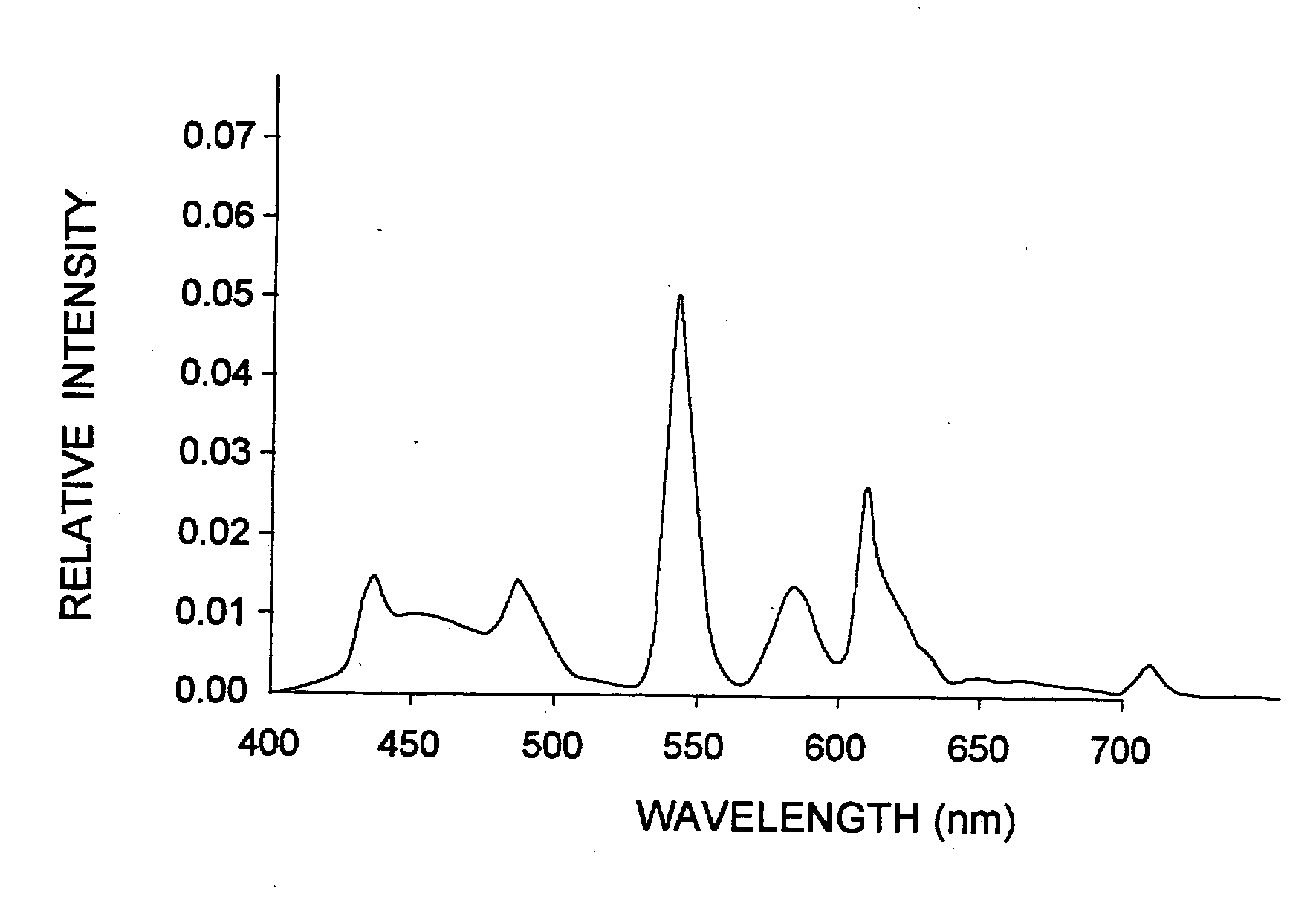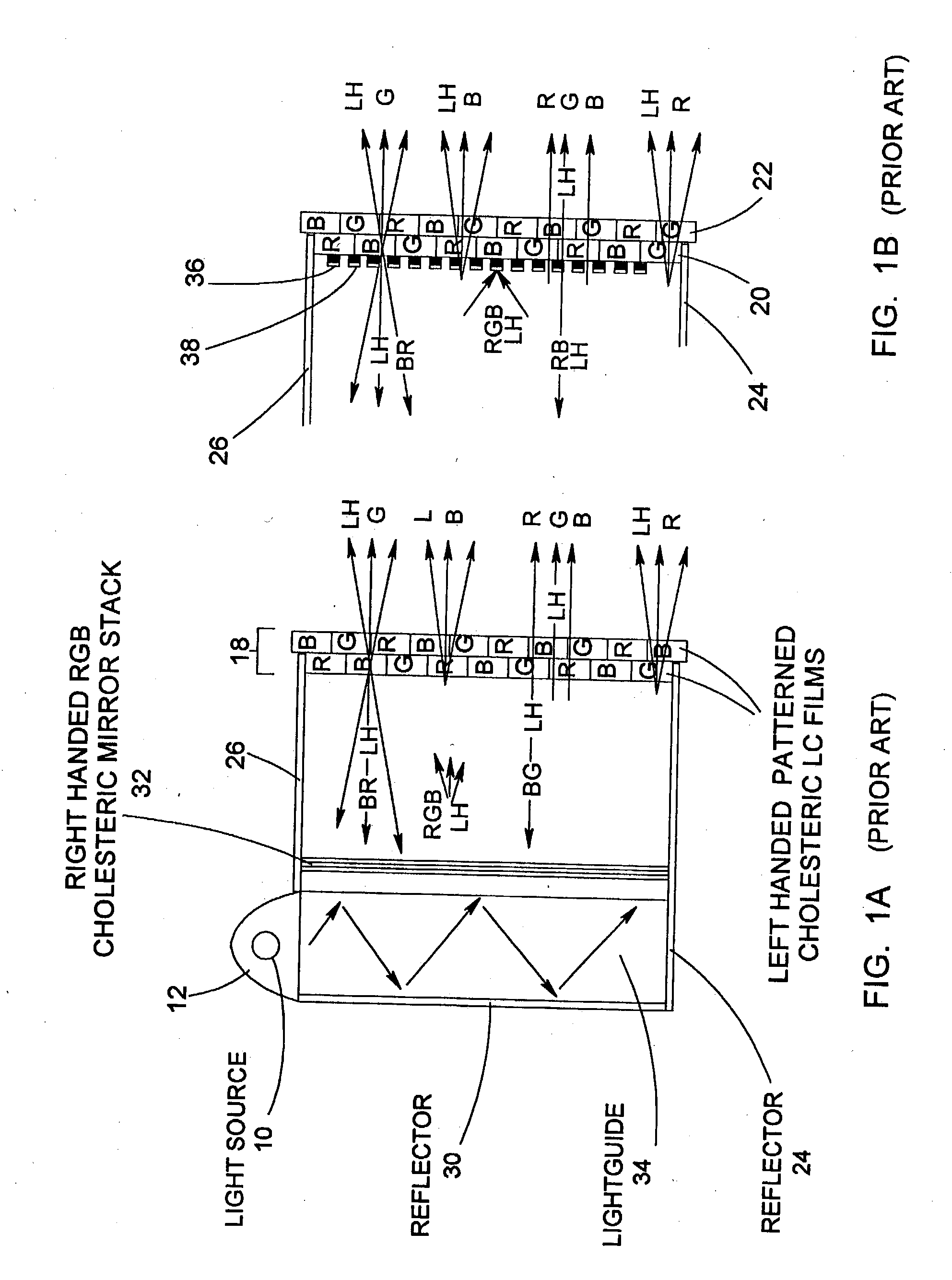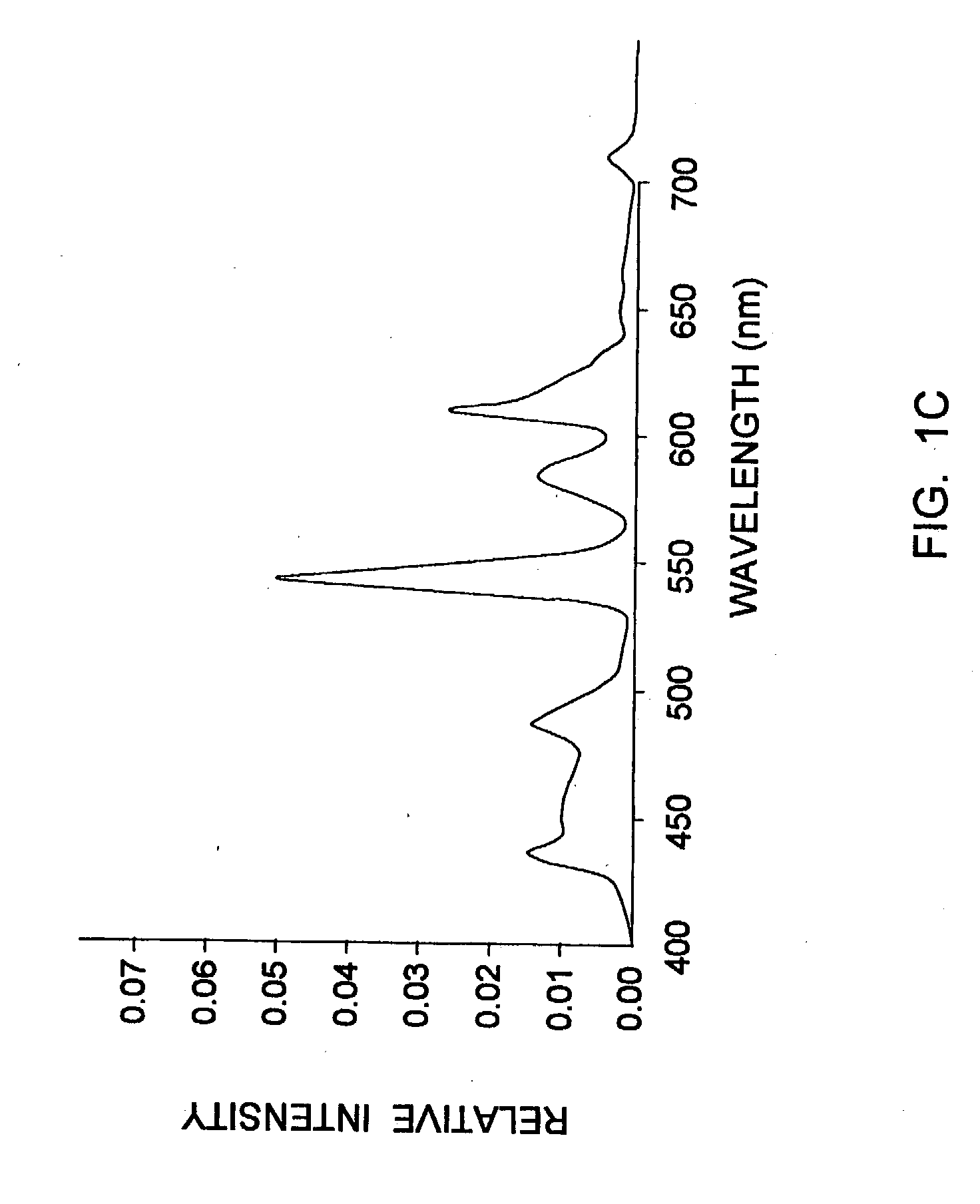High-brightness color liquid crystal display panel employing light recycling therewithin
a liquid crystal display and color technology, applied in the direction of polarising elements, door/window protective devices, instruments, etc., can solve the problems of light transmission, inability to produce high brightness images from prior art color lcd panels used in direct or projection display systems, etc., and achieve the effect of high brightness color
- Summary
- Abstract
- Description
- Claims
- Application Information
AI Technical Summary
Benefits of technology
Problems solved by technology
Method used
Image
Examples
Embodiment Construction
[0227] Referring now to the figures in the accompanying Drawings, the illustrative embodiments of the present invention will now be described in detail, wherein like structures and elements shown within the figures are indicated with like reference numerals.
[0228] Systemic Light Recycling Within the LCD Panel of the Present Invention
[0229] The light transmission efficiency of prior art LCD panels has been severely degraded as a result of the following factors: absorption of light energy due to absorption-type polarizers used in the LCD panels; absorption of light reflected off thin-film transistors (TFTs) and wiring of the pixelated spatial intensity modulation arrays used in the LCD panels; absorption of light by pigments used in the spectral filters of the LCD panels; absorption of light energy by the black-matrix used to spatially separate the subpixel filters in the LCD panel in order to enhance image contrast; and Fresnel losses due to the mismatching of refractive indices betw...
PUM
| Property | Measurement | Unit |
|---|---|---|
| angle | aaaaa | aaaaa |
| angle | aaaaa | aaaaa |
| angle | aaaaa | aaaaa |
Abstract
Description
Claims
Application Information
 Login to View More
Login to View More - R&D
- Intellectual Property
- Life Sciences
- Materials
- Tech Scout
- Unparalleled Data Quality
- Higher Quality Content
- 60% Fewer Hallucinations
Browse by: Latest US Patents, China's latest patents, Technical Efficacy Thesaurus, Application Domain, Technology Topic, Popular Technical Reports.
© 2025 PatSnap. All rights reserved.Legal|Privacy policy|Modern Slavery Act Transparency Statement|Sitemap|About US| Contact US: help@patsnap.com



